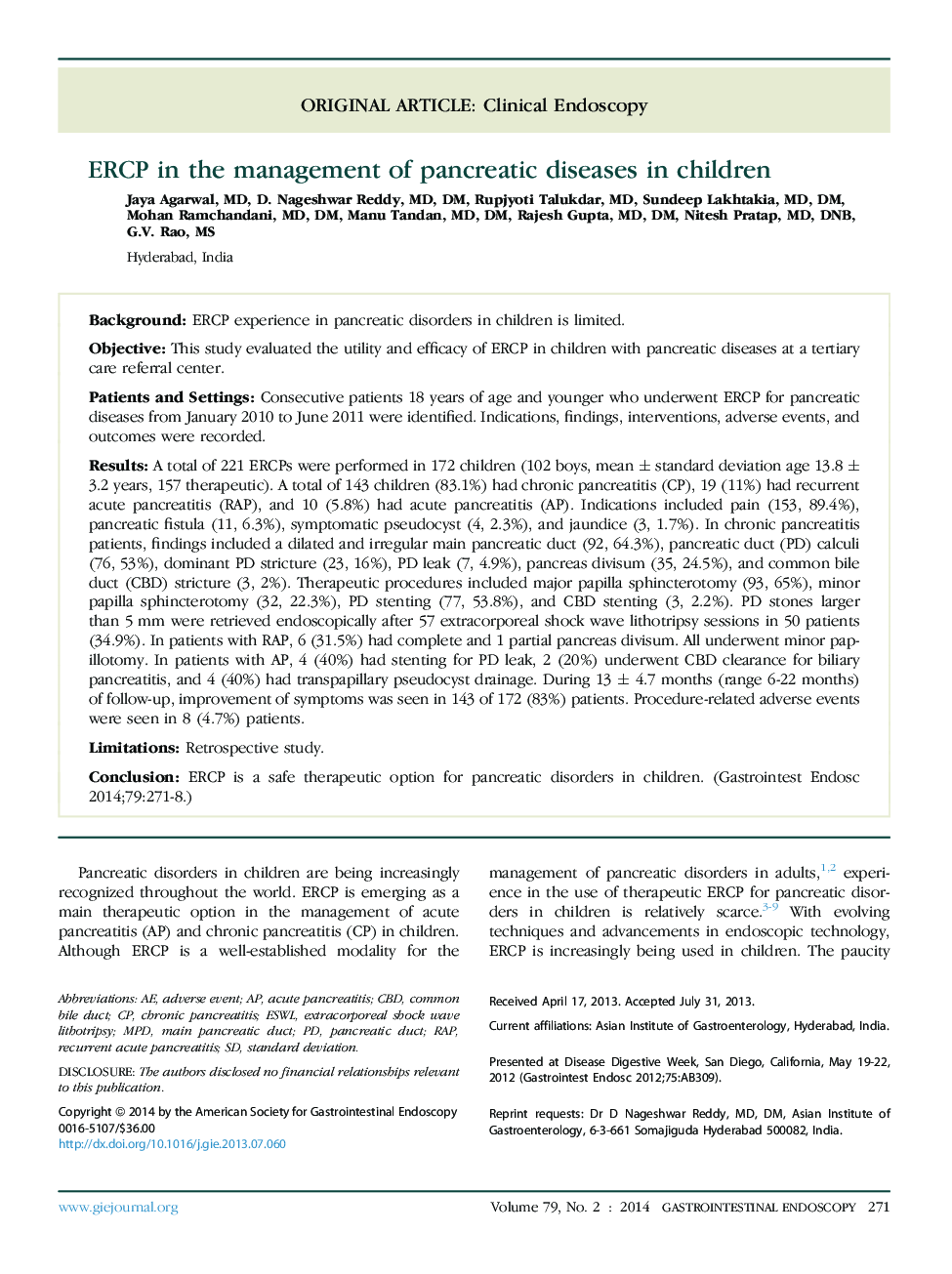| کد مقاله | کد نشریه | سال انتشار | مقاله انگلیسی | نسخه تمام متن |
|---|---|---|---|---|
| 3303554 | 1210317 | 2014 | 8 صفحه PDF | دانلود رایگان |

BackgroundERCP experience in pancreatic disorders in children is limited.ObjectiveThis study evaluated the utility and efficacy of ERCP in children with pancreatic diseases at a tertiary care referral center.Patients and SettingsConsecutive patients 18 years of age and younger who underwent ERCP for pancreatic diseases from January 2010 to June 2011 were identified. Indications, findings, interventions, adverse events, and outcomes were recorded.ResultsA total of 221 ERCPs were performed in 172 children (102 boys, mean ± standard deviation age 13.8 ± 3.2 years, 157 therapeutic). A total of 143 children (83.1%) had chronic pancreatitis (CP), 19 (11%) had recurrent acute pancreatitis (RAP), and 10 (5.8%) had acute pancreatitis (AP). Indications included pain (153, 89.4%), pancreatic fistula (11, 6.3%), symptomatic pseudocyst (4, 2.3%), and jaundice (3, 1.7%). In chronic pancreatitis patients, findings included a dilated and irregular main pancreatic duct (92, 64.3%), pancreatic duct (PD) calculi (76, 53%), dominant PD stricture (23, 16%), PD leak (7, 4.9%), pancreas divisum (35, 24.5%), and common bile duct (CBD) stricture (3, 2%). Therapeutic procedures included major papilla sphincterotomy (93, 65%), minor papilla sphincterotomy (32, 22.3%), PD stenting (77, 53.8%), and CBD stenting (3, 2.2%). PD stones larger than 5 mm were retrieved endoscopically after 57 extracorporeal shock wave lithotripsy sessions in 50 patients (34.9%). In patients with RAP, 6 (31.5%) had complete and 1 partial pancreas divisum. All underwent minor papillotomy. In patients with AP, 4 (40%) had stenting for PD leak, 2 (20%) underwent CBD clearance for biliary pancreatitis, and 4 (40%) had transpapillary pseudocyst drainage. During 13 ± 4.7 months (range 6-22 months) of follow-up, improvement of symptoms was seen in 143 of 172 (83%) patients. Procedure-related adverse events were seen in 8 (4.7%) patients.LimitationsRetrospective study.ConclusionERCP is a safe therapeutic option for pancreatic disorders in children.
Journal: Gastrointestinal Endoscopy - Volume 79, Issue 2, February 2014, Pages 271–278